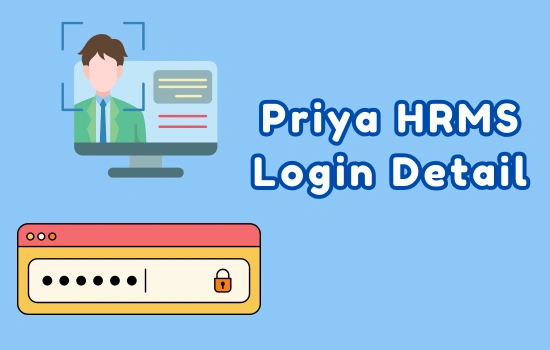In today’s fast-paced work environment, Human Resource Management Systems (HRMS) have become an essential tool for streamlining HR operations. Priya HRMS is a modern and comprehensive platform designed to handle various HR tasks while empowering employees with its Employee Self-Service (ESS) Portal. This portal enables employees to access critical HR functions and manage their information independently, enhancing efficiency and transparency.
This article serves as a detailed guide for employees to log in to the Priya HRMS ESS Portal, troubleshoot common issues, and make the most of its features.
What is Priya HRMS ESS Portal?

The Priya HRMS Employee Self-Service Portal is a secure, web-based platform that allows employees to:
- Access payroll and salary slips.
- Manage leave requests and track attendance.
- Update personal and professional details.
- Stay informed with company announcements and policies.
The ESS portal simplifies HR interactions, reduces manual intervention, and ensures quick access to important information.
Why Use Priya HRMS ESS Portal?
Employees benefit from using the Priya HRMS ESS Portal in several ways:
- Convenience: Employees can access their HR data from anywhere, at any time.
- Efficiency: Tasks like applying for leave or downloading payslips can be done in minutes.
- Transparency: The portal provides real-time insights into attendance, payroll, and leave balances.
- Autonomy: Employees can independently update their information, reducing the dependency on HR teams.
Step-by-Step Guide to Logging into Priya HRMS ESS Portal
Step 1: Access the Portal
- Open a web browser on your desktop or mobile device (e.g., Chrome, Firefox, Edge).
- Enter the Priya HRMS ESS portal URL provided by your organization. This link is typically shared during onboarding or via an official communication.
- Press Enter to open the login page.
Step 2: Enter Login Credentials
On the login page:
- Username/Employee ID: Enter your assigned username or employee ID. This is usually shared by the HR team during onboarding.
- Password: Input your password. If this is your first login, use the temporary password provided by HR.
Click the “Login” button to proceed.
Step 3: Complete Authentication
For enhanced security, Priya HRMS may implement a two-factor authentication (2FA) process:
- One-Time Password (OTP): An OTP may be sent to your registered mobile number or email. Enter the OTP in the designated field.
- Security Questions: If applicable, answer the predefined security questions to verify your identity.
Step 4: Update Password (For First-Time Users)
If you’re logging in for the first time, the system will prompt you to set a new password. Follow these steps:
- Enter the temporary password as your current password.
- Create a new password that meets security guidelines:
- At least 8 characters long.
- Includes uppercase and lowercase letters, numbers, and special symbols.
- Confirm the new password and save the changes.
Step 5: Explore the Dashboard
After a successful login, you will be redirected to the ESS portal dashboard. The dashboard typically includes:
- Quick Links: Shortcuts to commonly used features like payslips, leave requests, and attendance tracking.
- Notifications: Alerts for pending tasks, announcements, and deadlines.
- Profile Management: Access and update your personal details, such as address, phone number, or bank information.
Common Issues and Troubleshooting Tips
1. Forgotten Password
- On the login page, click the “Forgot Password” link.
- Enter your username or registered email address.
- Follow the instructions sent to your email or mobile to reset your password.
2. Account Locked
- After multiple failed login attempts, your account may be locked for security reasons. Contact your HR or IT team to unlock it.
3. Invalid Login Credentials
- Double-check your username and password for typos.
- Ensure that Caps Lock is off and that the keyboard language settings are correct.
4. Browser Compatibility Issues
- Use an updated version of your browser for optimal performance.
- Clear the browser cache and cookies if the portal fails to load correctly.
5. Server Downtime
- If the portal is inaccessible, confirm with your HR or IT team whether maintenance is underway or if there are technical issues.
Best Practices for Using Priya HRMS ESS Portal
- Secure Your Login Information
- Use strong, unique passwords and change them regularly.
- Avoid sharing your credentials with others.
- Log Out After Use
- Always log out of the portal, especially when using a shared or public device.
- Update Your Profile Regularly
- Keep your contact information, emergency contacts, and banking details up to date to avoid disruptions.
- Monitor Notifications
- Check the portal frequently for updates, announcements, and pending tasks.
- Access Mobile-Friendly Options
- If available, use the Priya HRMS mobile app for convenient access on the go.
Benefits of Priya HRMS for Employees
- Streamlined HR Interactions: Handle routine HR tasks without delays or paperwork.
- Data Transparency: Access detailed records of payroll, attendance, and leave balances.
- Time-Saving: Save time on simple tasks like applying for leaves or downloading documents.
- Enhanced Communication: Stay informed about organizational updates and policies.
Conclusion
The Priya HRMS ESS Portal is a powerful tool that empowers employees to take charge of their HR needs with ease and efficiency. By following the login guide above and adopting best practices, employees can seamlessly access and manage their data. For any technical challenges or further assistance, reach out to your HR or IT support team.
With the Priya HRMS ESS Portal, employees can experience a new level of convenience and autonomy in their professional journey!
Hina Abbasi is Editor and a passionate sports and entertainment content writer at WinnersMaze.com. Hina’s expertise spans across a wide range of sports, and interest in many TV shows allowing her to deliver insightful analysis and compelling stories that resonate with readers.

